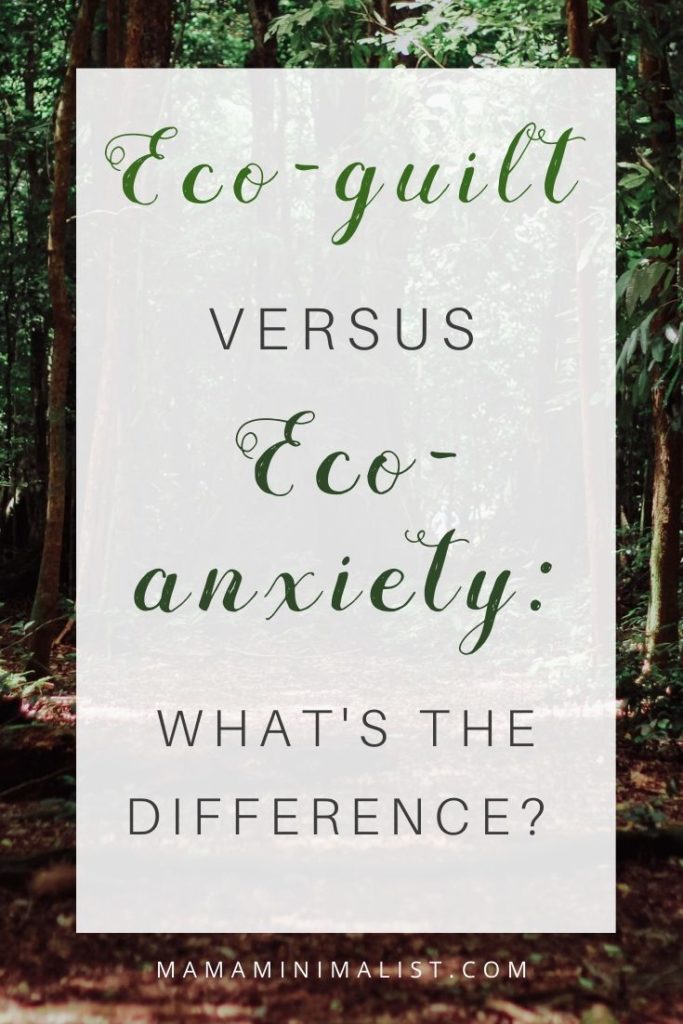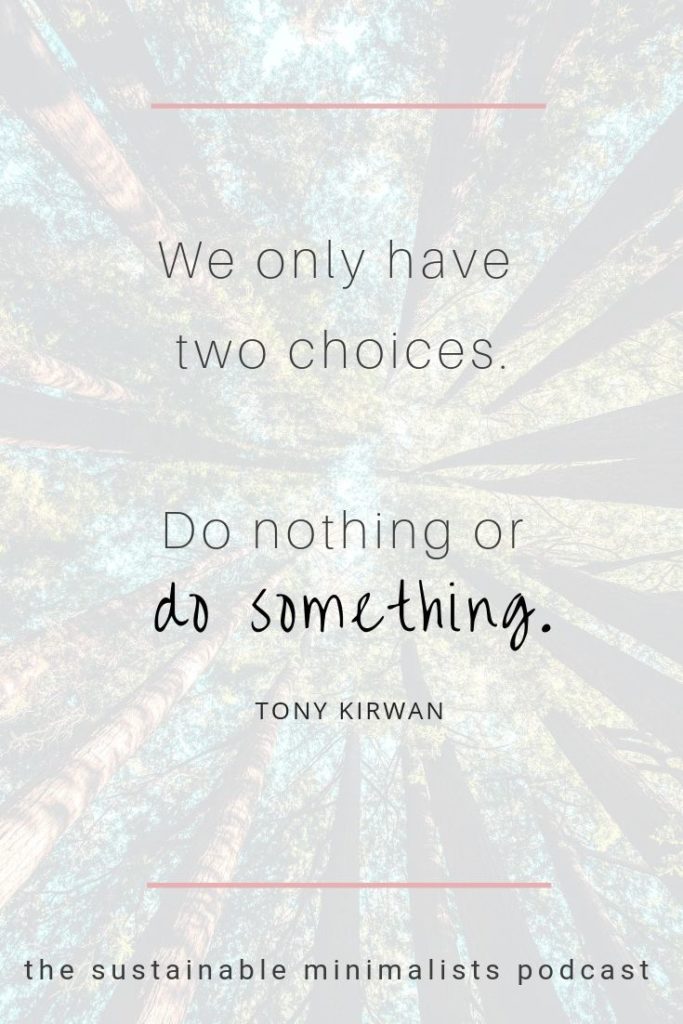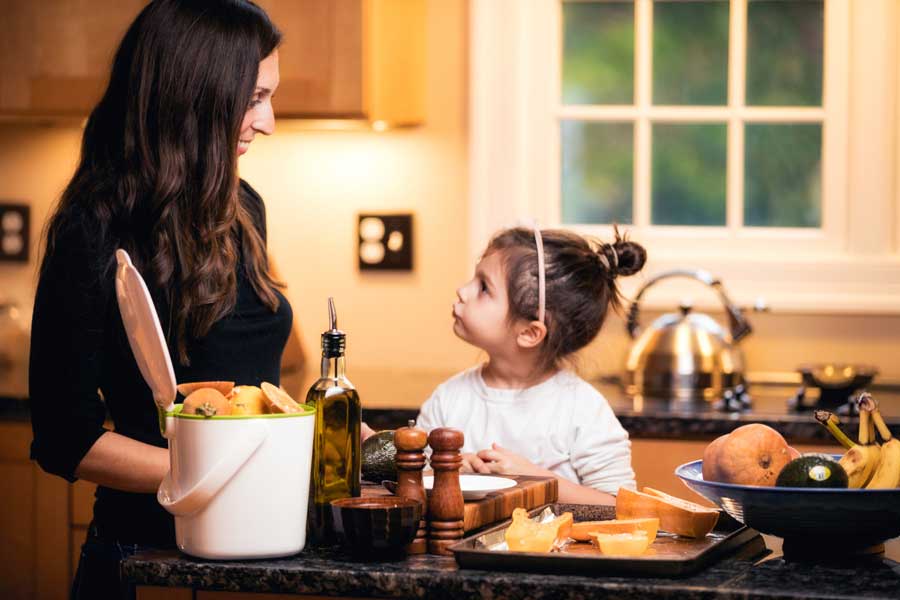Manage Your Eco Anxiety in 4 Steps
Help for Eco Anxiety
Does the future of our planet usher in hopelessness? Do you stay up at night worrying whether Earth will remain habitable for our children? If so, you may suffer from eco-anxiety and you may need help.
Psychologists have found a direct link between natural disasters and severe, sudden consequences to mental health. After Hurricane Katrina, residents reported elevated rates of Post-Traumatic Stress Disorder (PTSD) than the unaffected population.
But what about the less severe but long, slow burn of worrying over climate change but feeling powerless to change its course?
Is this form of chronic – albeit distant – stress even a ‘thing’?
Psychologists say yes, it’s definitely a ‘thing’. They’ve even coined a term to describe it: Eco-anxiety.
Eco-anxiety is fear for the future of our planet + manifests itself in feelings of anger, fear, powerlessness or exhaustion. A 2017 report by the American Psychological Association found that – because it’s chronic by nature – eco-anxiety can have lasting impacts on mental health.
Laura Durenberger offers 4 strategies for managing eco-anxiety that are rooted in both research as well as her unique personal experience, below.
Who suffers from eco-anxiety?
According to psychologist Honey Langcaster-James, Eco-anxiety is “the state of heightened anxiety some people experience relating to climate change”.
It’s no surprise, then, that younger subsets of the population are more likely to experience the effects of climate change: 72% of Millennials (born between 1981 + 1996) report that negative news stories about the planet impacts their well being (e.g. anxiety, insomnia, sleep issues, irritability).
56% of Generation X’ers (born between 1965 + 1980) report bouts of eco-anxiety, too.
Eco-anxiety isn’t just for adults. Research finds that it affects children as young as 10 years old, too:
“…four out of five of the 10- to 12-year-olds surveyed expressed strong feelings of fear, sadness and anger about environmental problems. A majority shared apocalyptic pessimism about the planet’s future.” (source)
How is eco-guilt different?
_____
Forget your reusable shopping bags at home? Find yourself ordering a To-Go coffee in a Styrofoam cup?
Many of us experience eco-guilt when we intentionally or unintentionally harm the planet.
Nearly one-third of Americans experience eco-guilt at one time or another (source).
Did you know?
You can find The Sustainable Minimalists Podcast wherever you get your podcasts.
Apple Podcasts | Google Podcasts | Spotify | Stitcher
Eco anxiety help: 4 strategies
Those suffering from eco-anxiety may benefit from treatment for generalized anxiety, and the 4 strategies below are tailored specifically for eco-anxiety.
If your symptoms are severe or debilitating, please contact a mental health professional.
Strategy #1. Use eco anxiety as a motivator
View eco-anxiety as an energy. Instead of sitting with that energy and letting it fester, channel it into a motivator.
Impactful ways to enact change include:
– Volunteering at organizations aligned with your principles
– Donating money or goods to worthy recipients
– Voting for candidates in both local and national elections that put environmental issues at the forefront of their agendas
– Joining political campaigns as a volunteer
– Researching eco-friendly products and companies and supporting them next time you purchase an item
– Protesting peacefully when appropriate
– Vowing to purchase less and reuse more
– Walking or biking to your destination instead of driving your car
– Contacting businesses when you see them acting in ways that harm the environment
– Educating family in friends about environmental issues in a way that’s both direct and unemotional
– Joining online communities (like this one!) dedicated to sharing ideas and solutions
Strategy #2. Help others go green
Redirect your energy by helping others. A bonus? Paying it forward and doing good deeds boost a bad mood.
Pay it forward the eco-friendly way by:
– Making tee-shirt bags and giving them away to someone in your community.
– Passing out reusable mugs at your local Starbucks.
– Starting a carpooling system with fellow coworkers.
– Creating and managing a local Buy Nothing group.
Strategy #3. Consume the news with intention
Psychologists have found that negative headlines greatly impact mood and that’s why, for many of us, the news triggers eco-anxiety.
Don’t allow negative headlines unfiltered access to your life. Instead, be intentional about how and when you consume the day’s top stories.
Perhaps you:
– Unfollow news organizations on social media so headlines don’t “pop up” unannounced throughout your day.
– Sign up for The Skimm or another once-per-day news email that summarizes the day’s headlines and gives you the option to learn more if you’d like
– Turn off cell phone notifications for news apps or delete certain apps altogether.
– Choose a time each day to read the newspaper or watch the news. Don’t multitask; instead, be fully present so you absorb what you’re reading and watching. This way you will not have to go back to continuously re-expose yourself to the anxiety trigger.
– Take a full-on media vacation if you need it (and don’t apologize for it!).
[For more intentional news consumption ideas, check out Laura’s post here.]
Strategy #4. Practice Mindfulness
Anxiety festers in both the future and in the past. Intentionally bring yourself back into the present to take back your power.
Not an old pro at mindfulness or meditation? No problem.
Employ the 5-4-3-2-1 technique: It’s easy to remember, can be done anywhere, and requires no prior mindfulness experience.
Here’s how. Take a deep breath, then focus on 5 things you see, 4 things you hear, 3 things you feel, 2 things you smell, and 1 thing you taste.
Take it slow. Repeat if necessary.
Mindfulness and meditation are called “practices” for a reason because they require effort, tenacity, and a bit of good humor before reaping benefits.
[Related: Mindfulness Tips for Modern Families]
Got kids? Eco-anxiety help for children
Do your children present with symptoms of eco-anxiety?
Some ways to help your child manage his/her eco-anxiety include:
– Giving them opportunities to express their feelings by listening and letting them talk
– Exposing them to fellow kids (ex. Greta Thurnberg) who are making a difference
– Taking them along when volunteering
Stay in-the-know!
Sign up for monthly eco-friendly inspiration.




